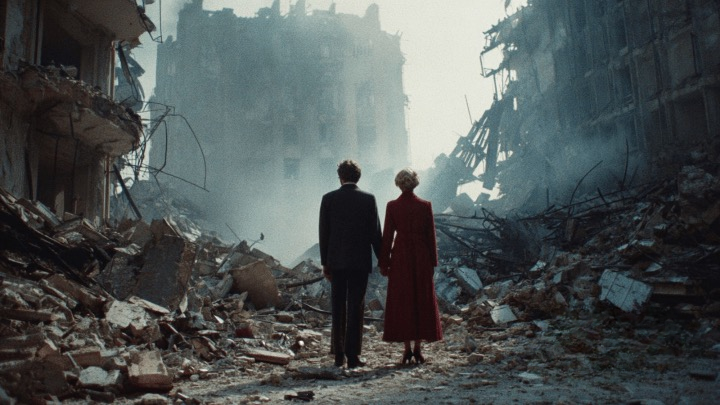Copyright 2025 Hisham Bizri
Introduction.
Imagine a world where love exists on the brink of collapse, where each tender moment is shadowed by threat. Channeling the loving intimacy of Shakespeare’s Romeo and Juliet and the mystery-laced erotic tension of Hitchcock’s Notorious, the film unfolds like a confession whispered in a storm. In a world where light reveals and blinds in equal measure, two brilliant architect lovers must navigate betrayal, memory, and spiritual erosion as the weight of a deadly building collapse threatens to expose the sins of a past too intricately designed to escape.
Logline.
When a celebrated architect is accused of causing a fatal building collapse, he flees with his lover to her ancestral mountain home, only to discover that the key to their redemption, and damnation, lies buried in the secrets they swore never to speak.
Synopsis.
Gabriel Lefebvre, a Franco-American architect at the height of his career, finds his life shattered after a building he designed in Paris collapses, killing two and igniting a media firestorm. With his reputation in ruins and official documents mysteriously vanished, suspicion falls squarely on him. Desperate and disoriented, he escapes to a snowbound alpine villa with Miriam Scholl who is his lover, muse, and daughter of a powerful European family with ties to the Church and a buried wartime past.
In the shadow of the mountains, the couple clings to each other amid encroaching dread. But as snow seals them off from the world, old tensions resurface: secrets, betrayals, and a growing sense that someone, perhaps even Miriam herself, is manipulating events to shape Gabriel’s fate.
Haunted by memory and tormented by guilt, Miriam descends into a paranoid spiral, unsure whether the trap they are caught in was built by others or by herself. When news breaks that Samuel Sitte, their former mentor and accuser, has been shot in what appears to be a suicide, the line between innocence and guilt, love and possession, begins to blur irreparably.
Echoing Romeo and Juliet, the film’s climax arrives not with reconciliation but with irrevocable rupture. As truths emerge, Miriam and Gabriel must confront the final, devastating question: Can love survive the full exposure of the self? Or is intimacy, like architecture, a structure doomed by the flaws of its foundation?
Director’s Statement.
The Cloud Affair is a film about doubt that is moral, emotional, and psychological, and how the spaces we inhabit reflect the fractures within us. I wrote a story where love is not redemptive but precarious, where intimacy itself becomes a kind of architecture: structured, curated, and slowly collapsing under the weight of what is unspoken. This is a story of two young people clinging to each other as the ground beneath them erodes and not knowing whether to hold tighter or let go.
Visually, the film lives between Hitchcock and Polanski. From Hitchcock, I draw the precision of suspense: an emphasis on what is not said, the camera’s detachment but meticulous gaze, and a tension built not through action alone, but also through implication. From Polanski, I have taken the psychological claustrophobia: the sense that the interior world is more dangerous than the exterior, that apartments and alpine villas can function as emotional traps. As in Rosemary’s Baby or The Ghost Writer, the spaces here are characters in their own right: seductive, deceiving, and ultimately untrustworthy.
I plan to shoot on 35mm to preserve a tactile realism, a texture that mirrors the erosion of truth in the story. Light functions not merely as illumination, but as interrogation. Shadows lengthen across faces and floors like accusations. Snow and silence are not just environmental, they become accomplices to the characters’ guilt. The Cloud Affair is a film where memory distorts, where trust is provisional, and where every close-up holds the question: is love enough when the truth threatens to destroy it?
This is not a film about what happened. It is a film about what people choose to believe and what they are willing to sacrifice to preserve that belief.


